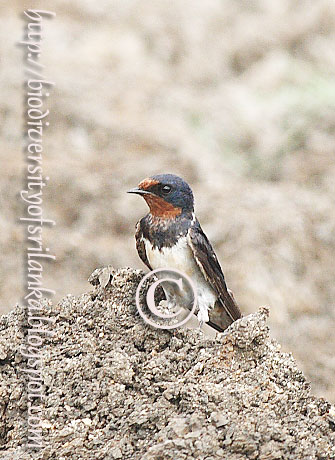Pages
▼
▼
Sunday, November 28, 2010
Thursday, November 25, 2010
Sanderling (Calidris alba)
Uncommon winter visitor to North-Western and south-eastern coastal areas during migrate season and usually found in flocks during its stay here till end of winter in Northern half of the world. It breeds in tundras in the far North. Its usual habitats are sandy beaches where it follows the waves as they advance and recede, while picking up small invertebrates exposing to view at each ebb.
සිංහලෙන් කියවන්න >>
Wednesday, November 24, 2010
Ruddy Turnstone (Arenaria interpres)
This common winter visitor arrives in the island from northern lands of Artic circle and occupies coastal areas, lagoons and estuaries mainly of the dry zone. Turnstone got that interesting name due to its habit of flipping over seaweeds, pebbles and shells in search of its prey which mostly consist of small invertebrates hide beneath them.
සිංහලෙන් කියවන්න >>
Tuesday, November 23, 2010
Tuesday, November 16, 2010
Blue dawn glory (Ipomoea indica)
Native vine of tropical America,
Sunday, November 14, 2010
Barn Swallow/Atu Wahilihiniya (Hirunda rustica)
Barn swallow is a very common winter visitor of all zones of the island, arriving at the beginning of the North-East monsoons and stay till end of April. It has a very fast flight and much of its time while in Sri Lanka
සිංහලෙන් කියවන්න >>
Monday, November 8, 2010
කන කොකා [Kana Koka]/Indian Pond Heron ( Ardeola grayii)
Very common bird usually found in paddy fields throughout the island. It also lives close to tanks, lagoons and marshlands. Eventhough it is solitary in habit during day time feedings , flocks can be seen flying to its night time communal roosting trees at dusk. Breeding season is from December to May and nests can be observed in regular heronries sometime with other species of herons, cormorants.
සිංහලෙන් කියවන්න >>
Sunday, November 7, 2010
Black-crowned night heron/ රෑ කොකා/රෑ කණ කොකා [Raa Koka/Raa Kana Koka] (Nycticorax nycticorax)
Common resident bird of marshes, mangroves, rivers, tanks and lagoons of low country both wet and dry zone and foot hills. Nocturnal in habit and spending the day time roosting communally in trees. Its food consists mainly of fish, frogs and some water insects.
සිංහලෙන් කියවන්න >>
Blue Daze (Evolvulus glomeratus)
Blue Daze is an ornamental plant introduced from tropical America
Thursday, November 4, 2010
Coppersmith Barbet (Megalaima haemacephala)
Coppersmith Barbet is a very common bird of forests and gardens of low country dry zone and lower hills. However occasional sightings of it in some wet zone areas are recorded and scattered colonies are reported from places like Kandy Sri Lanka
සිංහලෙන් කියවන්න >>
Tuesday, November 2, 2010
White-tipped Spreadwing (Lestes elatus)
Terrence de Fonseka wrote in 2000(The Dragonflies of Sri Lanka – WHT publications) “Apart from recorded locations nothings is known about this species in Sri Lanka











